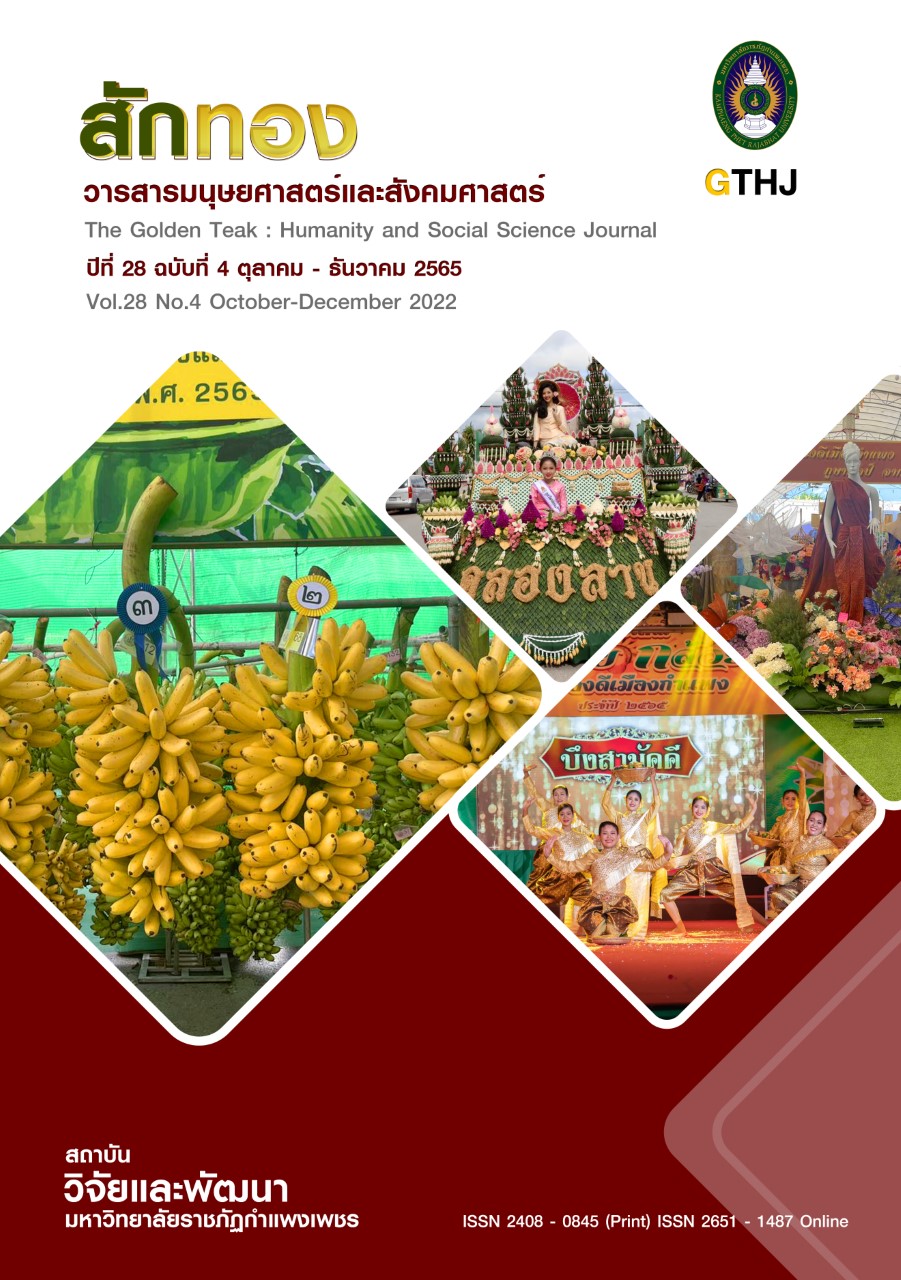The Re-invent of Tableaux Vivants
Main Article Content
Abstract
This research aims to explore and analyse the form of Tableaux Vivants and the characteristics of the ensemble in the Cinderella Suite. The researcher applies the archaeological restoration for reviving the Tableaux Vivants and presents the revive by analysing as well as describing.
The result of studying and analysing the Tabeaux Vivants’ presents that Prince Narisara Nuwattiwong composes the Cinderella Suite for the Tableaux Vivants’ performance. There are three elements in the performance consist of 1) the dancers dress in the story, act according to the lyrics and stand like images, 2) there are other components, namely a scene, light, and sound and 3) the playing and singing. There are six songs in the Cinderella Suite, including Wilanda Od, Farang Choraka, Khrob Chakrawan, Farang Ramtao, Wetsukam, and Hongthong.. The musicians play melodies only one round for each verse. There are sixteen times of gesturing associated with the poetry. Regarding the scene, there are two scenes in the entire performance. In terms of the costume, the dancers dress in the western style; the musicians and singers dress in the retro costume in the reign of King Rama V. Furthermore, the result of the research reveals that the Cinderella suite is played by the piphat maikhaeng ensemble. The Cinderella Suite’s score is noted in 1939, which contains six musical instruments, including Pi Nai, Ranad Ek, Khong Wong Yai, Khong Wong Lek, Ranad Thum Mai, and Ranad Thum Lek. Analysis of melodies according to Characteristics of the ensemble, it is found that “Ranad Thum Lek” is an instrument that creates a distinctive variation in different ways as follows: wide rhythmic patterns, frequent rhythmic patterns, melodic contour (conjunctive, ascending, descending), Syncopations achieved by playing off the beat, harmonisation. Therefore, it seems to be that the Cinderella Suite is one of the excellent suites in Thai traditional music and dance. To demonstrate the result of the research, the author has restored the Tableaux Vivants - the Cinderella Suite, which played by the piphat maikhaeng ensemble and established the full performance to the scholars as well as the spectators at the National Theatre of Thailand.
Article Details

This work is licensed under a Creative Commons Attribution-NonCommercial-NoDerivatives 4.0 International License.
บทความที่ได้รับการตีพิมพ์เป็นลิขสิทธิ์ของวารสาร สักทอง : วารสารมนุษยศาสตร์และสังคมศาสตร์ สถาบันวิจัยและพัฒนา มหาวิทยาลับราชภัฏกำแพงเพชร
ข้อคิดเห็นใดๆ ที่ปรากฎในวารสารเป็นวรรณกรรมของผู้เขียนโดยเฉพาะ ซึ่งมหาวิทยาลัยราชภัฏกำแพงเพชรและบรรณาธิการไม่จำเป็นต้องเห็นด้วย
References
Chulalongkorn, University. (1987). The Piphat Duekdamban, programme, and video stories of Rachathirat, Samkok, and Khawi. Bangkok : Chulalongkorn University.
Chulalongkorn, University. (1993). The Piphat Duekdamban, programme, and the video story of Nithrachakhrit. Bangkok : Chulalongkorn University.
Chulalongkorn, University. (1997). The Piphat Duekdamban, programme, and the video story of Phra Lo. Bangkok : Chulalongkorn University.
Chulalongkorn, University. (1998). The Piphat Duekdamban, programme, and the video story of Rachathirat. Bangkok : Chulalongkorn University.
Fakjamrun, S. (2018, October 26 and 2019, April 26). The National Artist of Thailand. Interview.
Fine Arts, Department. (1963). The collection of dramatic and concert composition Royal writing of Somdet Phrachao Barommawongthoe Chaofa Kromphraya Narisara
Nuwattiwong, Dedicated in hundred years anniversary of Somdet Phrachao Barommawongthoe Chaofa Kromphraya Narisara Nuwattiwong on 28 April 1963. Bangkok : Fine Arts Department.
Kaeomak, T. (2013). Tableaux Vivants Suites. [Online]. Available : http://metaboledoing.blogspot.com/2013/06/blog-post_21 [2015, April 5].
Limsakun, P. (1994). Rabam Sibot : The concept of reintroducing ancient dances. Bangkok : Chulalongkorn University.
Sowat, B. (2015, October 18 and 2019, May 23). Music master, Bunditpatanasilpa Institute. Interview.
Tramot, M. (1984). Som Song Sang : The Music’s biography of Montri Tramot, Established for celebrating achievement and eighty-four anniversaries of Montri Tramot. Bangkok : Rueankaeo Kanphim.


